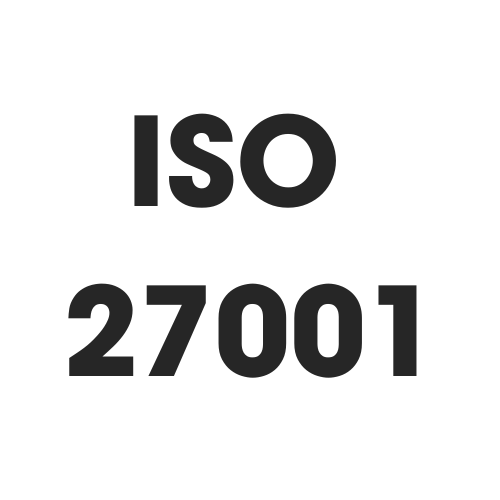Patient-centric design for engaged users
We speak to Ivo Pires, Head of Design, about his role as the patient advocate and how user research was the starting point for the development of Phio Engage.
Starting with the patient
EQL is creating products with and for the patient. Extensive user research — time spent understanding pain points and needs, concerns and worries — enables us to provide solutions that can improve patients' lives.
As Head of Design, Ivo Pires is an advocate for patient research and its importance in product design.
User research: Understanding the patient need
“When developing Phio Engage, we interviewed a lot of people to understand their pain points in the MSK recovery process and we were repeatedly hearing that the waiting time was a long and tedious process, with some people waiting up to 60 weeks to see a physio, once they had been recommended by their GP. It was clear that a key priority was the need to find ways to assess patients more quickly through a digital solution that they can do at their convenience.”
Feedback also revealed that during the waiting time to see a physio, patients were concerned about their health and were mistakenly avoiding mobilising the injury because they believed that putting pressure on it would make it worse.
Most MSK conditions can benefit from a home-based exercise programme. Traditionally patients visit a physio and are given a set of exercises to do at home. Here research revealed another pain point — many patients admitted they weren’t confident they were doing the exercises correctly and waited until their next appointment to ask the physio again how to do them. (Others had simply forgotten to do the exercises because it wasn’t a formed habit.)

Patient-centric solutions: Responding to the patient need
In developing Phio Engage the team was responding to many of these pain points and issues and providing a full rehabilitation programme in digital format that allows patients to take control of their own care. It provides attainable and accessible exercise programmes tailored to a patient’s condition which supports them on their recovery journey.
The huge investment in patient research reflects the emphasis EQL places on gaining a deep understanding of the user in order to design relevant products that solve a real problem.
“Many early stage businesses that get a lot of funding often spend on features or apps they think will be a success,” said Ivo. “But the majority of the time they fail because they spend all their time developing something people don’t need. My emphasis is to interview as many people as possible to really understand what the problem is and then create solutions, harvesting technology in order to improve their lives.”
The patient interviews were a starting point and then the product team carried out a round of qualitative interviews with Phio Engage users — asking people multiple questions in a non-leading way about their experience of using the app: what they liked about the process, whether they felt any pain points, or whether at any point they didn’t feel supported?
“A lot of this research is conversational, individual interviews with users,” said Ivo. “I ask them what hurdles they faced, to uncover the issues at a level of detail that is the core to understanding what we have to do to remove the pain point for them.”
Phio Engage recently launched with the first client and the team will gather ongoing feedback from users and, following the easing of Covid restrictions, will plan a full user testing round based on the findings.
Ivo explained extensive user research is vital in informing the product design. He said: “It’s a long and intensive process, but it’s worth it. EQL is patient-centric. Everything revolves around the patient and design decisions are taken for the good of the patient. All the features we build are in order to remove pain points and hurdles that we have identified through patient interviews. We want to provide the best service for patients.
“Clinicians can provide the best treatment, but we need to deliver it in the best possible way, which is by being patient-centric. Our overall goal at EQL is to get people better.”

“Clinicians can provide the best treatment, but we need to deliver it in the best possible way which is by being patient-centric. Our overall goal at EQL is to get people better.”
Design: An intricate balance of visual and UX research
User experience (UX) is only one aspect of the team’s research. “Anyone can do testing,” said Ivo. “Anyone can do research and get the user experience. The UX part is so important: to understand the patients in order to provide them with the best solution. But if you manage to do all this work and you don’t manage to display it in a good way you might not get the adoption and the engagement that you seek. Design is an intricate balance of visual and UX research. When it’s done well it can be really powerful and this is my goal – trying to get better on both elements in order to get the most powerful solution every single time.“
Ivo believes the key is to make something that’s really easy to understand, to remove all the complex information or cognitive overload and bring the focus onto one or two elements per screen.
“I’m coming from a very visual background,” he said. “I studied fine arts, so making something that is very pleasing to the eye is very important to me. It can frustrate my team, because I’m so pernickety on typesettings, colour and negative space, all these things I have collected from my years doing fine arts, painting and drawing.”

He believes that creating something that’s pleasing to the eye generates a positive feeling in the user which could encourage them to be a brand’s “best ally or friend”. As a user's brain starts trying to rationalise that positive emotion, they will attach it to all the things they love within the app — a picture, an interaction, or the way the information is displayed — and when the list gets big enough in their heads they will be true fans who ‘love’ the brand.
“I feel that good design is like putting a lot of work and a lot of complexity into the most simple resource, so people actually just enjoy their experience. They should have something on their screens that is simple and straightforward because the design itself takes in all the complexity and only displays what is needed at the right time.”
Good design for digital inclusion
Feedback clearly confirms the important role that user-centred design plays in supporting digital inclusion. Patients say how easy it is to use Phio and the figures support this — the average age of users is 65 for one of our clients and the oldest user has been over 90.
Ivo’s passion and obsession are clearly supporting EQL’s patient-centric mission.
“I’m always keen to seek out new trends and be aware of what is happening in different areas of technology to understand what is in the realm of possibility,” he said. “My goal is really to try and provide the best solutions for the end user and that continuous learning and my knowledge and experience are the tools that will empower me to deliver just that.”

.png)











.png)




.png)